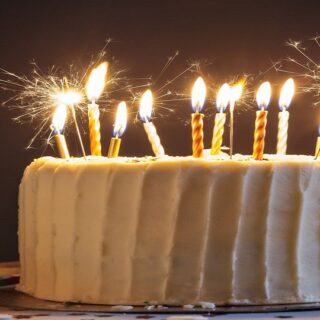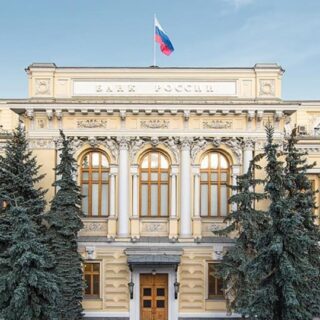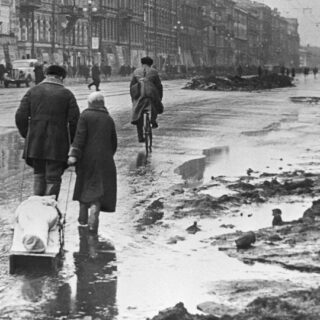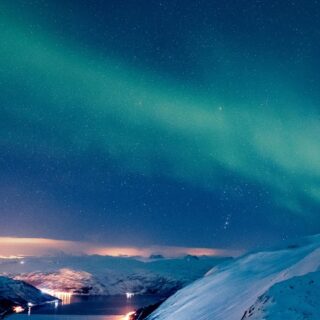
Ancient Japanese have expressed the world after death in various ways.
Beyond death, one is said to go to the following variously expressed realms:
- the eternal land, or the land of root (tokoyonokuni, or nenokuni)
- the hidden world (astral world) (kakuriyo)
- the land of the dead (Hades) (yominokuni)
- the mountain, where the dead become guardian Kami, watching over their family for generations to come.
The eternal land and the land of root are mentioned in the Koibi Nihonshoki, and Man’yoshu. It is the place where the soul-spirit (reikon) receives eternal life, and the place where every new life is generated. It is therefore also referred to as the “land of mother.”
In the section of the Kojiki dedicated to the Kami Susanoo no mikoto, there is the saying, “I am going to go to the land of mother, the katasu land of root (nenokatasukuni).” “Root” (ne) implies the source that gives birth to everything. “The eternal world” (tokoyo) implies the land full of life energy where eternal youth is maintained. In volume 4 of the Man’yoshu, a collection of ancient Japanese short songs, there is a song with the words, “my wife must have lived in the land of the eternal world; she has become younger than when I saw her in the past.”
Apparently the ancient Japanese had the image of “the land of the eternal world” as a place far across the ocean. In the section on Emperor Jimmu in volume 2 of the Kojiki, there is a saying, “Mikenu no mikoto (another name for Jimmu) has gone to the land of the eternal world by walking on the wave.” In the section on Emperor Suinin, there is also a saying, “Ise is the land where the waves of the eternal world go back and forth.” This was said by Amaterasu omikami when she settled down in the land of Ise.
In the story of Umisachihiko and Yamasachihiko (the names of two young men, one living in the mountains, the other near the ocean), here is an episode where a mountain man, Yamasachihiko, visits the palace of the ocean Kami. There is also a dragon castle in the story of Taro Urashima, and all these include similar imagery of the ocean in the eternal land.
In Okinawa, it is also said that the land of Kami, called niraikanai, exists far away across the ocean. This belief was later influenced bv Buddhism and developed into the belief in the pure land of Fudaraku. In Kumano, in order to attain Nirvana, the believer at the end of his life could practice “crossing the ocean toward Fudaraku” by rowing a small boat into the southern sea. The reason for the emphasis on the south lies in the popular Buddhist teaching that the palace of the dragon Kami is located in Sri Lanka. This was said to be the pure land of Fudaraku, because Sri Lanka is located in the southern ocean, beyond the Indian subcontinent.
The word kakuriyo (the hidden world) does not appear in the ancient terature. However, the provenance of the word is also ancient, and dehotes an invisible world that contrasts to the known or visible world (utsushiyo). After all, the entire universe is the land of Kami, and the ancients viewed the universe as consisting of both visible and invisible worlds. According to the teaching handed down to Yamakage Shinto, our material world mirrors the hidden world, and every existence is the mirrored embodiment of the spirit of Kami, or shinrei. Therefore we can say that the hidden world is the land of root (nenokuni), that is, the root from which everything has emerged.
As for the word yominokuni (Hades), there is a strong sense of continental Asian origin. Its literal meaning is the “underworld for the dead.” There is a very famous episode of a visit to Hades by Izanagi no mikoto in the Kojiki. This word, yominokuni, seems to have been influenced by Chinese Taoism. In ancient China, we find deep underground tombs, and in Okinawa there are also cave burial customs that suggest consciousness of a world below. This notion of an underground world is colored with a strong sense of the uncleanness of death. It is at variance with most other Japanese conceptions of the other world.
The view of the other world expressed by the idea of the mountain is well established and broadly accepted by the Japanese. Songs in the Man’yoshu refer to a place called “Hase in Yamato” which is a spiritual world after death. There are several more places like these, such as Mt. Myochi (Myochi san) in Nachi, Mt. Haku (Haku san) in Kaga, Mt. Gastsu (Gassan) in Dewa, Mt. Tate (Tate yama), Mt. Osore (Osore zan) in Mutsu, among others. These mountains are called spiritual mountains in Japan, and they used to be sacred places to which it was thought the spirits of dead human beings went. These spiritual mountains also became the base for the school of mountain ascetics that has existed since the arrival of Buddhism in Japan. According to Japanese folklore, the spirits of the dead remain for a certain time at the mountain to watch over their descendants and to receive memorial services. After being completely purified, the spirit stays within the mountain, but moves to a higher dimension to become one of the ancestral spirits of that village. In some places, people used to believe that in January these ancestral spirits came down from the mountain to become Kami for the field in order to bring a good harvest. After the harvest festival in the spirits went back to the mountain to become mountain autumn, Kami again in order to protect their posterity. This belief also exists in Okinawa, and they call the mountain at the back of the village “Kusha-tenoutaki.”
Therefore, it has been widely believed in Japan that ancestral spirits exist in the invisible world, overlapping with physical reality and having intimate connection with people living in this world. In this unseen world, the ancestral spirits continue to work on their own purification. It was also widely believed that having completed some degree of purification, the spirits would move on to a higher level of the “world of spirits of Kami” (shinreikai). This purification process is thought to be very much the same as the process of inner growth for people living In the contemporary material world. Therefore, the structure of the memorial service at each special anniversary for the dead was a replica of the ritual service for each important turning point of inner growth during our life here on earth.
There is also another myth of humans going straight hara — the highest level of the world of Kami after death. However this was originally presented as a joke in order to counter Buddhist influence. In reality, the Japanese did not seriously believe that human beings could immediately enter Takamanohara, even though there are to Takamano-some human spirit-souls which join with Kami after becoming a focus for devotion, that is to say a noble spirit-Kami (reijin). They achieve this status through great work during their lives in this world… Taba manohara, however, is thought to be of such a high order that no spirit souls could easily be accepted to that level, no matter how hard and for how long they have worked on their purification. In this context, it is important to be aware that reijin (spirit-Kami) is different from shinrei (spirit of Kami). The former is the spirit who has reached the rank of Kami through spiritual work, while the latter is the essence or nature of Kami that descends. Today, the early Japanese view of the other worlds for the dead is widely described as a horizontal theory. This means that it conceived of the other world as “beyond the ocean” or as “the inner mountain,” realms parallel to the material world rather than above or beyond it. It was during the Kofun era (ca. 300-710; known as the “era of the ancient tomb”), that the “vertical” view of other worlds of the dead reached Japan from the Asian mainland. The Buddhist view of the world of heaven for the dead also spread to Japan at around this time. With the exception of the unique episode of the visit to Hades by Isanagi no mikoto, the ancient Japanese believed that human beings continue living in the other world after death. Their life there is quite similar to the one here, even though the other world is more bright and lucid in character.
This concept is different from both the Buddhist idea of the pure land and the Christian notion of heaven. Even in Takamanohara, the highest level of the world of Kami, each Kami works and strives. In the Kojiki and Nihonshoki, there are descriptions of labors in the rice field, the farming of silk worms, weaving, rituals and worship, and the work of the blacksmith. Those two books explain that these labors are archetypal representations of the work of humanity.





